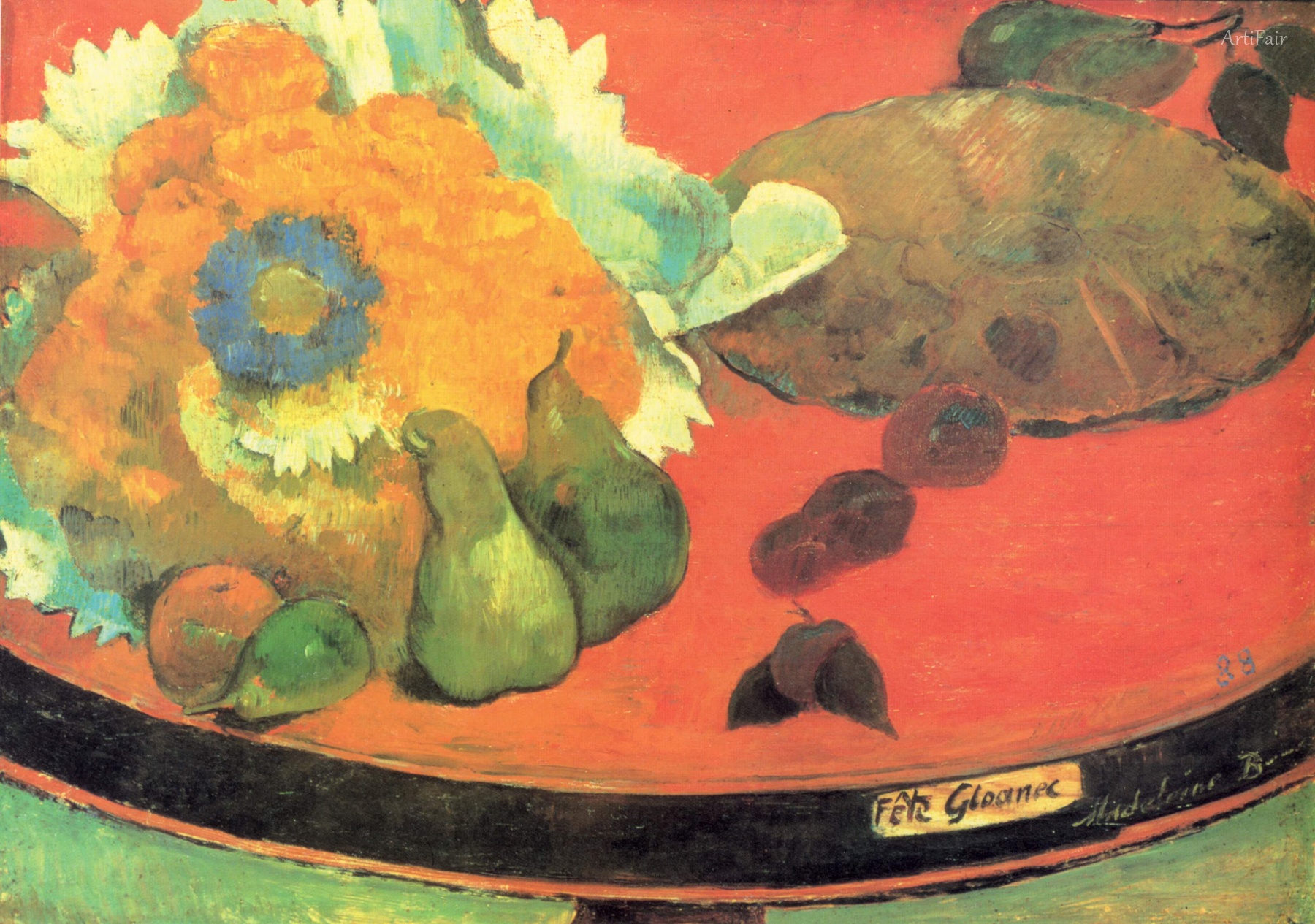
Art Appreciation
This still life bursts with vivid, warm energy as a vibrant orange-red table serves as the dynamic stage for an array of natural objects. A bouquet of flowers dominated by a rich, golden yellow and soft white petals captures the eye, their textured brushstrokes evoking depth and vitality. Nearby, three pears, each painted in loose, expressive strokes with greens fading into subtle shadows, sit nestled among smaller fruits and a large, rounded object that suggests a bread or a similar staple. The artist’s use of contrasting cool and warm tones—deep greens and fiery reds—imbues the painting with an emotional tension that feels both festive and intimate. The curved black edge of the table leads the viewer’s eye around the composition, anchoring the elements with a rhythmic flow. The subtle yet deliberate placement of shadows adds a dimensionality that brings the scene to life, while the rough, painterly technique enhances its tactile presence.
Created in 1888, this work reflects the late 19th-century Post-Impressionist embrace of bold color and expressive form, moving beyond mere representation to evoke mood and symbolism. The rich palette and spirited brushwork hint at an emotional resonance, a joyous celebration captured in stillness. The inscription “Fête Gloanec” suggests a festive or local communal connection, adding a layer of cultural narrative to this composition, which pulses with life despite its stillness. The painting’s artistic significance lies in its imprint of a world seen through passionate eyes, where everyday objects transcend their mundanity to become vessels of vibrant life and celebration.